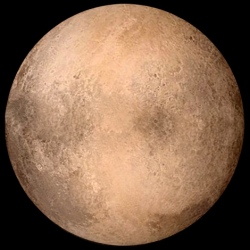
Currently there are 3486 confirmed exoplanets, 4496 exoplanet candidates and 581 multiplanet systems. We are within about 11 months of the launch of the TESS space telescope.
The Transiting Exoplanet Survey Satellite (TESS) will discover thousands of exoplanets in orbit around the brightest stars in the sky. In a two-year survey of the solar neighborhood, TESS will monitor more than 200,000 stars for temporary drops in brightness caused by planetary transits. This first-ever spaceborne all-sky transit survey will identify planets ranging from Earth-sized to gas giants, around a wide range of stellar types and orbital distances.
Astronomers have discovered only a few exoplanets that are anywhere close to the Earth in size and composition. Your team has estimated that TESS could detect as many as 2,700 planets, including several hundred Earth-size planets.
There are a number of things that TESS will be able to do to exploit this treasure trove of Earth-size planets that we envision. First, TESS will be able to detect very subtle changes in the intensity of a star’s light as an Earth-sized planet passes in front of the star. These changes in light intensity will be incredibly small. Just to give you an idea of how small these effects are: the Earth passing in front of the sun, viewed from outside the solar system, would cause a drop in the light of the sun of about 85 parts in a million. TESS is being designed to detect a drop in light intensity that is even smaller – in the range of approximately 40 parts per million.
The other thing that TESS will do is that it will be particularly sensitive to stars that are smaller and cooler than the sun. The sun is a typical star, but in some sense it’s not quite average. The sun is a little bit warmer and larger than many stars in the galaxy. Most stars are significantly smaller than the Sun, typically with radii only half to two thirds that of the sun. These are called M stars, and it turns out that they are 2 to 3 times as abundant as solar-type stars. Because these M stars are cooler, they emit a lot of light in the near infrared part of the spectrum.
TESS will be to scout the sky for extrasolar planets that will be the best targets for detailed study in the future. And it will do that by searching the entire sky and by concentrating on the brightest stars. TESS’s search area will be about 400 times greater than the area Kepler is covering, and it will be able to seek out targets that are optimally placed for follow-up and also optimally bright for focused follow-up using optical and infrared telescopes, especially those that are being developed to do detailed spectroscopy and those optimized for long-term monitoring. The importance of finding the very best targets, for which the results will be most conclusive, is going to be extremely important because the follow-up observations are difficult and require a lot of telescope time.
The James Webb telescope should also launch in 2018 and will be able to followup and detect what is the basic composition of the atmosphere of many of the exoplanets found by TESS.
